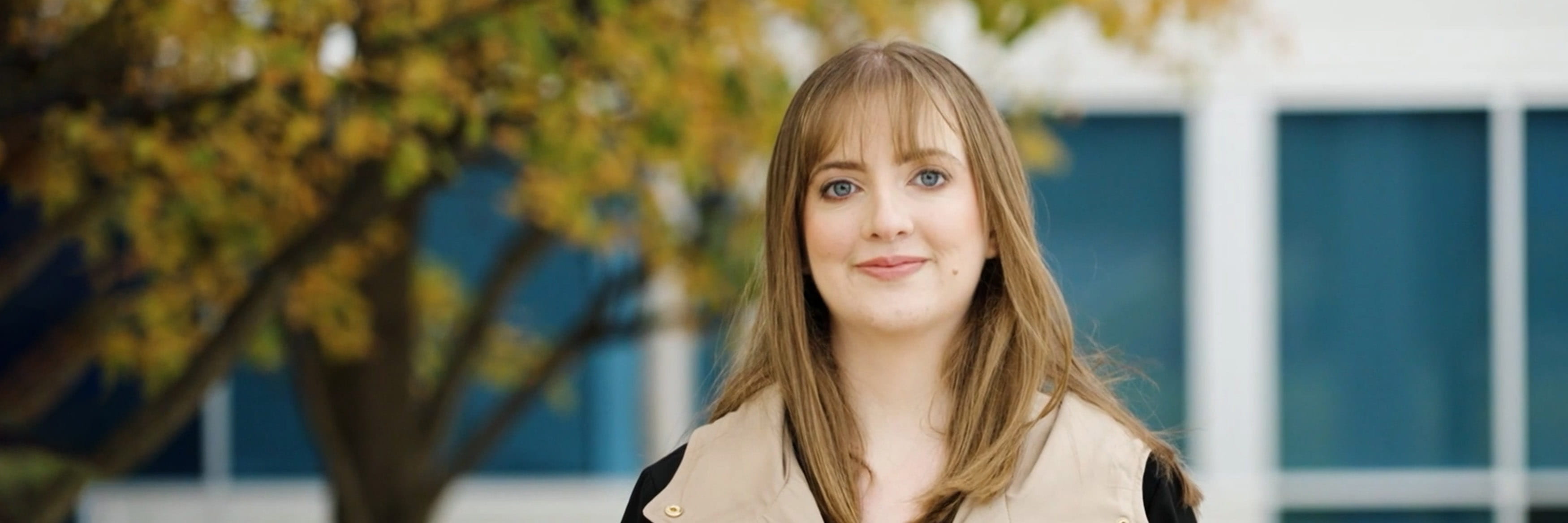
Heather Worsley manages global sustainability at QIAGEN, supporting departments across our organization to develop procedures that integrate sustainability into our operations. Right now, much of her job involves improving environmental data quality, understanding current impact, identifying areas that need the most improvement, and measuring success.
Could you tell us about your background and how you became interested in sustainability?
Climate change is the main topic that got me interested in sustainability. After learning about the scale and complexity of the problem, I knew I wanted to work on it in some capacity. I studied environmental science as an undergraduate student, then went on to get a Master’s degree in Sustainability Management, which focused on how businesses can change to address social and environmental problems.
What does sustainability mean to you in the workplace?
I’ll start by saying what it’s not. Sustainability isn’t about just meeting legal requirements, and it’s not about coming up with short-term initiatives to boost our reputation. Compliance and improved reputation should result from a successful sustainability strategy but are not the primary goal.
Sustainability in the workplace means taking complete responsibility for the company’s impacts, both positive and negative. We have to actively mitigate negative impacts, like our CO2 emissions, and drive positive impacts like improving access to healthcare. It requires continuous improvement and is never static.
What measures are we taking at QIAGEN to be more sustainable?
The Corporate ESG Committee is working on a comprehensive strategy that builds upon these existing initiatives.
Our biggest environmental projects right now are reducing our plastic and carbon footprint. These are both very complicated goals, with a variety of subprojects contributing to them. For example, reducing carbon emissions involves:
- improving the energy efficiency of our operations
- switching our energy contracts to renewables
- adding more electric vehicles into our fleets
- amending our purchasing requirements, and much more.
Our plastic reduction efforts are currently focused primarily on packaging. This involves replacing Styrofoam boxes with plant-based alternatives, switching bubble wrap for paper, and reducing the overall size of our boxes. Some projects aim at reducing waste during operations by replacing single-use items like overshoes and bonnets.
Many of the ideas for these projects come from cross-departmental teams, but others come through volunteer sustainability committees or suggestions in our internal sustainability surveys. It’s really essential that employees speak up about their ideas, and know who to contact, otherwise, we’ll be missing out on potential improvements.
How much effort does it take to make these changes?
It really depends on the project. Some common problems we deal with are coordinating a huge number of stakeholders and navigating established change controls. These can make what seems like a simple change much more difficult.
That being said, there’s a lot of energy and effort behind sustainability initiatives. When employees have a clear understanding of why a change is necessary and the impact it will make socially or environmentally, they are very supportive.
How are these small changes adding up to make a sizable impact over time?
We’re always building on past efforts, and even if a solution isn’t perfect, it’s still worth doing.
One of the ways we’re building momentum is through the volunteer sustainability committees. There are instances where a committee has identified a problem with something like waste sorting, or improper recycling. They start with a small initiative that addresses the problem, which ends up evolving over time to completely change the standard operating procedure. The progress also builds across sites. When one site introduces a successful initiative, the committees at other sites will often copy it and tailor it to their own location.
What initiative would you say has had the most impact so far?
It’s difficult to choose, but the Styrofoam cooler replacement is the most impactful of our plastic reduction initiatives so far. As of the end of November 2021, we’ve replaced over 12,000 coolers with paper-based and straw-based alternatives. I’m excited to see how that changes over time as the other plastic projects progress.
What do you have planned for the future?
Moving forward, we will continue to improve data accuracy, more clearly define responsibilities, and improve communication about our sustainability strategy.
What are your top tips for creating a more sustainable work environment?
Working towards sustainability is a collaborative effort. Speak up about problems you see, even if you don’t have a solution in mind, because someone else might. Practically speaking, it can be easier to start with initiatives that reduce waste. They usually have some associated cost savings, making it easier to get support.
You can also take inspiration from what other organizations are doing, whether that’s one of our business partners, your local grocery store, or something you saw online. We all have a lot to learn from one another.


